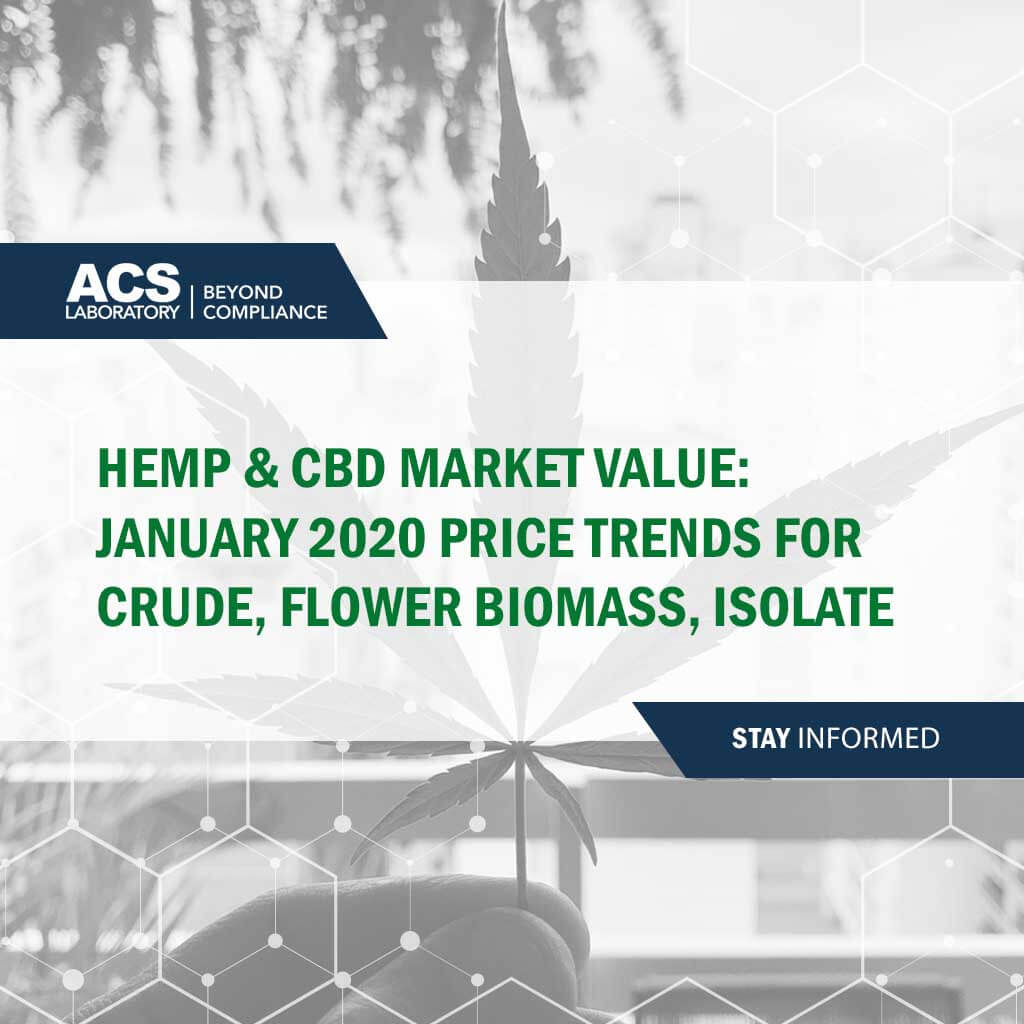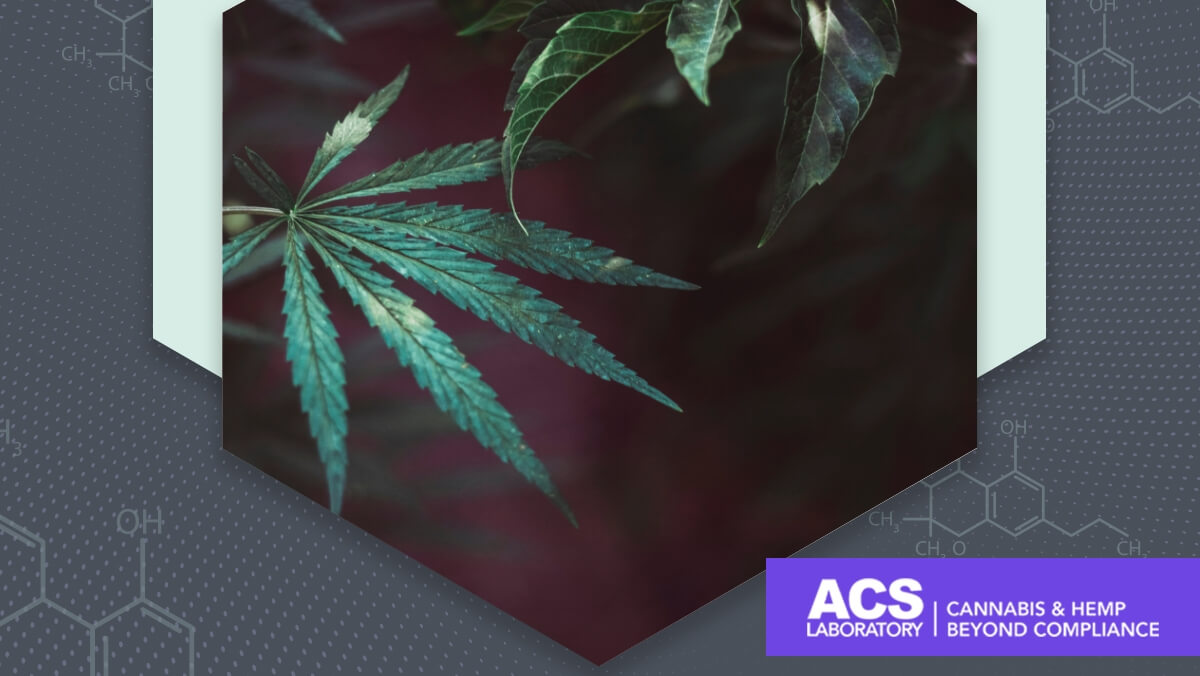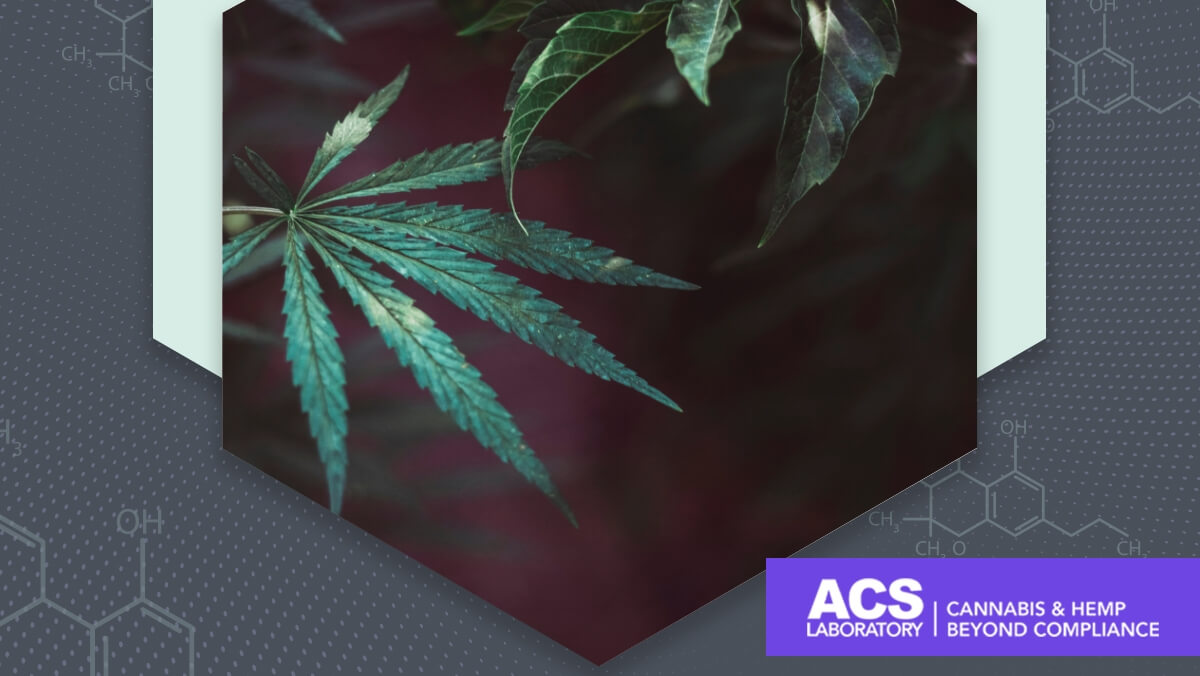Are We Producing Too much Hemp and CBD?
The short answer is yes. According to financial media outlet, Benzinga America is growing exponentially more hemp than the market can feasibly process and consume. This is the number one reason why the cost of hemp has steadily declined in 2019 and has reached an all-time low as of January 2020.
While wholesale prices are dropping across nearly all hemp products--from raw biomass, to flower, to isolates, and distillates--not all hemp products are created equal. Moreover the current drop may ultimately level out as the market stabilizes. As a hemp supplier, processor or consumer, it’s important to understand all of the factors that make up hemp and CBD pricing trends so that you can plan for the future.
Here we dive into major factors like product type, moisture content, quality and volume with an extensive guide to today’s hemp and CBD market price trends.
In this post:
- Price trends by hemp product
- Trends Based on THC Content, Volume and Quality
- Market Supply
- Future Forecast

Price Trends by Hemp Product
CBD Biomass (Raw)
Biomass refers to the whole hemp plant materials. The vast majority of the market utilizes biomass to produce CBD, which is derived from the leaves and stalks, aka “waste” after the plant’s flowers and seeds has been used -- in a wide variety of products and supplements. Prices for biomass are generally dependent on the CBD content per pound, which is measured on a dry weight basis on a standard that requires it be at least 80% dry (according to Hemp Benchmarks).
When CBD biomass is not dry enough, it will result in a decreased wholesale price.
CBD Biomass Market Value
According to a Hemp Benchmarks report, up to 25K pounds of CBD Biomass sold for roughly $4.02 per %CBD per pound in June 2019. That price dropped significantly to $2.32 in October and is selling at $1.31 as of the latest report in January 2020, representing an 67% decrease overall.
Dried CBD Flower
Dried CBD flower refers to the bud and trichome portions of the hemp plant, which are removed from the stalks and stems. Dried flower is smokeable and sold alone or in pre-rolled joints. Dried CBD flower commands a higher price point than CBD biomass because it has been cut, trimmed and is ready to sell.
Dried CBD Flower Market Value
Croptober did not affect the price of CBD flower as dramatically as it did biomass. In June 2019, CBD flower sold for about $349 per pound wholesale. The price dropped to an average of $319 per pound in October followed by sharper decline as of the latest report in December. CBD flower is now selling at $226 per pound, representing a 35% dip in 6 months.
Crude Hemp Oil
Crude hemp oil is extracted from the hemp plant through one of several methods. The most common methods are pressurized CO2 or solvent extraction using ethanol or a hydrocarbon. Crude hemp oil contains all of the cannabinoids (including THC), terpenes and flavonoids found naturally in the plant.
It’s often further purified (winterized) to remove organic plant compounds such as lipids, waxes and chlorophyll, which increases the product’s overall potency. But can break down some more fragile compounds like terpenes and flavonoids.
Crude Hemp Oil Market Value
Crude hemp oil has also experienced a sharp decline in value, dropping from $2,066 per kilo in June to $1,016 in October. By December, Hemp oil dropped to $668 per Kilo, representing a 68% decrease in value.
Refined Hemp Oil (Distillates)
When crude hemp oil undergoes distillation to produce an even purer product, it becomes refined hemp with a much higher market value. Refined hemp further breaks down into three categories:
- CBD full spectrum oil, which contains all cannabinoids, terpenes and flavonoids.
- CBD broad spectrum oil, which has been fully or partially expunged of cannabinoids, plant materials, and terpenes.
- THC-free distillate, which is a broad spectrum oil that has also been expunged of all THC components using advanced techniques such as chromatography.
Refined Hemp Oil Market Value
Full spectrum CBD oils are the least refined and warrant the lowest market price at about $1,791 per kilo. THC-free CBD distillates on the other hand, warrant nearly double that price ($3,120) due in part to the expensive processing as well as the market demand.
However, refined hemp oil overall has significantly declined from June, 2019 ($5,628) to January, 2020 ($2,528). As a whole, the three categories of refined hemp oil have dropped by 55%.
CBD Isolates
CBD isolates are the purest CBD products available to the market, produced by extracting all of plant components including, terpenes, flavonoids, and cannabinoids. CBD isolates come in granular or powder form and have no taste or fragrance. The final product contains 0% THC and is made up of 96%+ CBD.
CBD Isolates Market Value
Despite this seeming advantage, isolates are not as popular as refined oils. The average price of CBD isolate per kilo as of January 2020 is $1,624 which dropped from 66% at its price in June.
Industrial Seeds
Industrial hemp seeds are used to produce a wide range of hemp biomass, usually for grain or fiber purposes. Grains are derived from hemp seeds and used for products like food and beauty oils. Fiber, which is derived from hemp stalks is used for products like papers and textiles.
Industrial uses for hemp represents a much smaller portion (approximately 13%) of the market compared to CBD (approximately 77%), but demand exists and supply is low, which means the price per pound is much higher. Moreover as prices have been declining across most hemp products, industrial hemp seed prices are on the rise.
Industrial Seeds Market Value
The value of industrial seeds more than doubled from May to October 2019, according to Hemp Benchmarks. In October, hemp seeds were selling for $5.59 per pound. However, since October, the price has steadily declined to $4.57 per pound as of the January report.

Trends Based on THC Content, Volume and Quality
THC Stripping
The USDA recently published its interim rules for hemp sale and cultivation, which determined that total THC content cannot exceed 0.3%. Moreover the rules define total THC to include THCA content as well through the following equation: (%THCA*.877) + %Delta9-THC. This threshold is very easy to surpass, especially when plants grow to full maturation.
Therefore cultivators whose crops test above the legal limit (known as hot crops) must seek remediation to remove the THC or else they must destroy the entire harvest. THC stripping services can cost about $1/input gram, thereby driving down overall profits.
Volume
Like most commodities, volume is a major factor in determining overall market price. According to Hemp Benchmarks’ January, 2020 report, the price of CBD biomass when purchasing up to 25K pounds is about $1.31 per % CBD per pound. By contrast when volume increases to 100K pounds, 1M pounds, or 1M+ pounds the price subsequently drops to $1.14, $1.01, and $0.55 respectively.
Extraction Method
Extraction methods generally fall into the categories of CO2 or liquid solvent extraction (using ethanol or hydrocarbons). In order to process hemp using CO2, it must first be pressurized in metal tanks to transform from a gas into a supercritical fluid. From there, the CO2 solution draws the desired components from the plant such as cannabinoids, terpenes or flavonoids. The CO2 solution is later evaporated leaving a concentrated oil, shatter or budder behind.
Liquid solvent extraction uses solutions such as butane, propane or ethanol to collect the components from the raw CBD biomass. After extraction, these solutions are purged of the solvents, leaving behind the extracted hemp material.
Extraction Method Pricing
Carbon dioxide extraction is the safest method because it doesn’t leave behind any toxic solvents that could contaminate the final product. It’s also the slowest and most expensive extraction method, due to the steep cost of the technology. For instance a 5-liter CO2 extraction machine can cost about $100,000. By comparison, a hydrocarbon machine costs about $20,000.
This higher operating cost may warrant a higher wholesale price if the market understands its value, but extraction method does not necessarily have a 1:1 relationship with wholesale price.
Machine vs Hand Harvesting
Machine harvesting uses industrial devices to cut, collect and transport mature hemp biomass. While this requires a large initial investment in machinery, it is generally more efficient and cost effective in the long term. Especially when harvesting hemp for industrial purposes, specialized machines can cut a swath about 40 feet wide through a field.
This type of machinery is optimal when harvesting on a wide scale, but they can easily shatter seeds and compromise overall quality. Despite the fact that machine harvesting works rapidly, it may not be the best method when harvesting hemp for its delicate flower heads. In these cases, hand harvesting may produce a higher quality yield because the process is more precise. Higher quality seeds and buds may also translate to higher profits.
But in order to ensure the return is worth the investment, hemp cultivators must hire the right amount of labor, which can be costly. For example, if there are not enough people to hand cut the harvest in time, crops may over-mature and overproduce THC, rendering them illegal and potentially worthless.
Fast Dry vs Slow Curing
Once hemp is harvested, growers must immediately transport the plants to a drying facility to remove the majority of moisture content. On strategy is slow curing, which requires growers to utilize a facility that is between 60 and 70°F with humidity levels between 45 - 55%. This process helps preserve volatile terpenes, which can degrade at higher temperatures. It also provides an environment whereby freshly harvested hemp can continue increasing in cannabinoid potency.
While this method certainly produces a higher quality product that could warrant more money due to a higher CBD concentration, it may also end up producing more than the legal limit of THC.
Heated dryers and continuous air flow dryers can be used to cure hemp quickly. While efficient, they can also compromise the seed and plant through overheating or cracking of the seeds.
Additionally, during the aeration process the roof will be cold and could develop condensation without proper ventilation. That condensation can drip into the hemp bins and form mold buildup around and on the plants.
While the curing process itself does not directly dictate the price of hemp biomass or flower, the resulting quality of the product will. For example, slow curing may produce a higher concentration of CBD which will warrant a higher wholesale price, but if THC rises above the legal limit, the product is not sellable. Similarly, fast drying will improve output and ensure that the crop does not continue increasing in THC potency, but cracked seeds, contamination, and lower CBD content will all drive down pricing.
By Cannabinoid Level
When harvesting hemp for smokable flower, oils or isolates, cannabinoid levels matter. For example, CBD biomass pricing is directly dependent on the percentage of CBD per pound. With regards to distillates, THC content directly affects the wholesale price.
As mentioned above, when hemp oil is 100% stripped of THC, it sells for nearly double the price of full spectrum oil. Aside from CBD and THC, lesser known cannabinoids like CBG (will link to the blog) or CBN are making the biggest difference in price. According to Hemp Benchmarks the price of CBG biomass varies, but generally sells for around $22.42 per % CBG per pound (wholesale), equating to roughly $175 to $325/pound overall.
Market Supply
Regardless of product type or processing method, market flooding is the biggest factor behind today’s trends in hemp and CBD pricing. Today, cultivators can forecast 1,000 plants per acre and roughly 0.5 - 1 lb per plant. That equates to 500 - 1,000 lbs per acre, which can be doubled when planting earlier in the season. This may have sounded great in theory, but the reality of today’s oversupply of hemp means approximately 60% of growers cannot find buyers.
Future Forecast
Today’s wholesale trends looks bleak but it does not mean doom and gloom for the future. According to trading platform, PanXchange, this type of volatility and oversupply is normal in emerging markets and will ultimately correct itself. After all, the U.S. hemp market is projected to grow to $2.6 billion in sales by 2022 with plenty of profits to go around.
For farmers, key strategies may be to grow a little less than capacity, set up contracts in advance, and safely store hemp that cannot be immediately sold. It may also mean changing strategies for growing, harvesting, drying and extracting to ensure that the end product warrants the highest prices. The hemp industry has an incredible trajectory and it’s vital to stay focused on producing the best quality product available.
At ACS Laboratory, we stay current with market trends and legal compliance so that we can better serve our customers. Contact us today to schedule a test or ask a question about your hemp harvest.




.jpg)





.png)
.png)
.png)
.png)
.png)